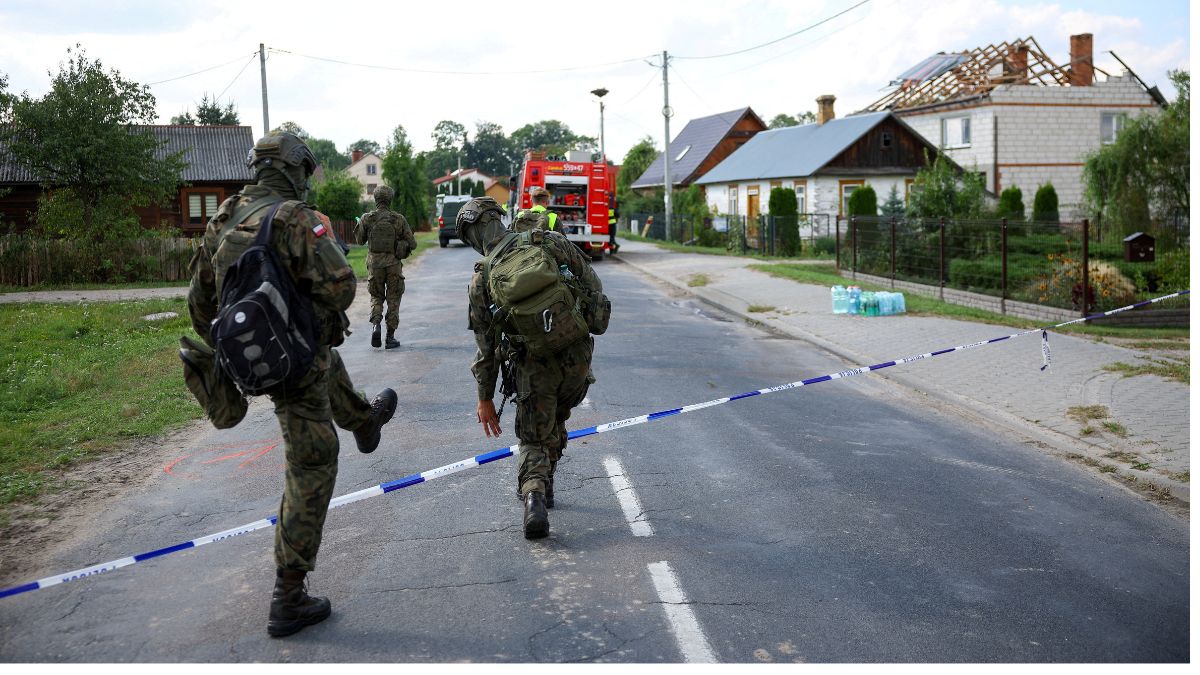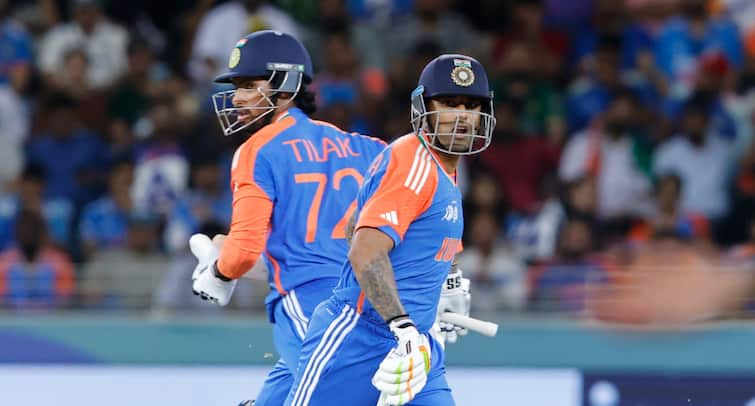Tensions on Nato’s eastern flank have surged following two major drone incidents in less than a week.
First, nearly 20 Russian drones entered Polish airspace, marking one of the most serious spillovers of the war in Ukraine since Moscow’s invasion began in February 2022.
Just days later, Romania reported a similar violation of its airspace, forcing it to scramble fighter jets and triggering sharp diplomatic protests.
These back-to-back incidents have fueled fears that the conflict could spill over into Nato territory, testing the alliance’s ability to deter and respond to aerial threats while stopping short of direct confrontation with Russia.
How did Romania confront the drone breach?
On Saturday, Romania scrambled two F-16 fighter jets after detecting a Russian drone crossing into its airspace during a coordinated attack by Moscow on Ukrainian infrastructure near their shared border.
The Romanian Ministry of Defence said the aircraft identified the drone and monitored it closely before it vanished from radar approximately 20 kilometres southwest of Chilia Veche, a village in the Danube Delta region.
Defence Minister Ionut Mosteanu confirmed that the pilots had considered engaging the drone. However, due to its low altitude and trajectory back toward Ukraine, they held fire.
“The F-16 pilots came close to taking down the drone as it was flying very low before it left national airspace toward Ukraine,” Mosteanu said in an interview with Romanian television channel Antena 3.
He added that helicopters would be deployed to comb the border region for any potential wreckage, although early assessments suggested the drone had fully exited Romanian airspace.
Editor’s Picks
Romanian authorities issued a warning to residents in Tulcea County, which lies along the border with Ukraine, advising them to take shelter as a precaution.
This area has repeatedly been exposed to Russian strikes because of its proximity to Ukrainian port cities targeted by Moscow, particularly during recent attempts to disrupt Ukrainian grain exports via the Danube River.
The Ministry of Defence later released a detailed statement specifying that the drone in question was a Geran model, commonly used by Russian forces.
According to the statement, the drone “orbited for about 50 minutes, from north-east of [the village of] Chilia Veche to south-west of Izmail, and left national airspace near the town of Pardina, heading towards Ukraine.”
Romanian authorities confirmed that the drone did not pass over any heavily populated areas and therefore posed no immediate threat to civilians.
The operation to monitor the drone was supported by two German Eurofighter Typhoon jets, part of a Nato air policing mission stationed in Romania.
This was not Romania’s first encounter with Russian drones. In September 2023, Romanian authorities reported that fragments of a Russian drone had landed on its territory across the Danube River from Ukrainian grain ports.
At the time, Russia had focused its campaign against Ukraine’s agricultural export facilities, aiming to block vital shipments from reaching international markets via the Black Sea.
A year later, in September 2024, Romanian officials again discovered drone debris along the banks of the Danube.
These incidents prompted the Romanian parliament to pass legislation early this year granting the military authority to shoot down drones that illegally breach national airspace during peacetime. The law is in place, but full enforcement rules are still pending approval.
How did Romania, EU, and Nato react?
In a public statement, the Romanian Defence Ministry declared, “The irresponsible actions of the Russian Federation represent a new challenge to regional security and stability in the Black Sea area. Such incidents demonstrate the Russian Federation’s lack of respect for international law.”
Romania’s Foreign Minister Oana Toiu announced that the matter would be raised before the United Nations General Assembly, where she would advocate for stricter global sanctions to hold Moscow accountable for its ongoing violations.
EU foreign policy chief Kaja Kallas also condemned the incident, saying Moscow’s actions were unacceptable and marked a reckless escalation.
“The violation of Romanian airspace by Russian drones is yet another unacceptable breach of an EU member state’s sovereignty,” Kallas wrote on X.
“This continued reckless escalation threatens regional security. We stand in solidarity with Romania. I am in close contact with the Romanian government.”
Swedish Foreign Minister Maria Malmer Stenergard issued a similar statement, highlighting collective defence within Nato, “Sweden stands in full solidarity with Romania as a Nato Ally and EU Member State. We are always ready to contribute further to the deterrence and defence of the Alliance.”
How did Zelenskyy in Ukraine react?
Ukrainian President Volodymyr Zelenskyy confirmed on X that data collected by Ukraine indicated the drone had penetrated approximately 10 kilometres into Romanian territory and remained inside Nato-controlled airspace for nearly 50 minutes.
In a direct appeal to Western governments, Zelensky said, “It is an obvious expansion of the war by Russia – and this is exactly how they act. Sanctions against Russia are needed. Tariffs against Russian trade are needed. Collective defence is needed.”
He urged Nato allies to respond decisively before Moscow escalates further, warning that Russian forces deliberately direct drones into Nato countries to test their responses.
“The Russian military knows exactly where their drones are headed and how long they can operate in the air,” Zelenskyy wrote. “Do not wait for dozens of Shaheds and ballistic missiles before finally making decisions.”
Zelenskyy’s statement reflects Ukraine’s growing frustration with what it sees as a slow and cautious Western approach to Russian provocations.
How did Poland face Russian drone incursions?
The Romanian incident followed closely on the heels of a dramatic escalation in Poland, where nearly 20 Russian drones entered its airspace overnight between Tuesday and Wednesday night last week.
This marked the most serious breach of Nato airspace since the start of the Ukraine war.
Poland, with support from Nato allies, responded by deploying a range of military assets, including F-35 and F-16 fighter jets, Mi-24 and Mi-17 helicopters, Black Hawk helicopters, and Patriot air defence systems.
Some of the drones were shot down, while others were allowed to continue once authorities determined they did not pose an immediate threat.
The incident prompted the temporary closure of Lublin airport in eastern Poland and led to mass alerts being sent via SMS to residents of border regions, warning them to take precautions.
Polish Foreign Minister Radosław Sikorski provided critical details in an interview with The Guardian. “Interestingly, they were all duds, which suggests to me that Russia tried to test us without starting a war,” Sikorski said.
He pointed out that while some drones travelled hundreds of miles into Polish territory, their lack of explosives indicated that Moscow was probing Nato’s defences rather than attempting to cause casualties.
“The drones didn’t reach their targets and there was minor damage to property, nobody was hurt. If it happened in Ukraine, by Ukrainian definitions, that would be regarded as a 100 per cent success,” Sikorski noted.
Although Polish forces shot down only three or four of the drones, Sikorski rejected suggestions that the country’s air defence systems had been caught off guard.
Nato Secretary General Mark Rutte praised the alliance’s swift action, “Our air defences were activated and successfully ensured the defence of Nato territory, as they are designed to do.”
Nato announced on Friday that it would increase the deployment of fighter jets and other defensive assets to its eastern flank to guard against further Russian drone incursions.
How has Russia responded?
Moscow has denied deliberately targeting Nato territory. A senior Russian diplomat in Poland suggested that the drones entering Polish airspace may have originated from Ukrainian-held areas rather than Russian-controlled territory.
Russia’s Defence Ministry confirmed that it had conducted a large-scale drone strike against Ukrainian military infrastructure in western Ukraine but insisted there had been no plans to hit targets inside Poland or Romania.
Is Putin testing Nato?
The back-to-back breaches have sparked debate among analysts and officials about Nato’s readiness to confront modern drone warfare.
Peter Bator, a former Slovak ambassador to Nato, argued that the incidents reveal gaps in the alliance’s deterrence strategy.
“It is a very good illustration that we need to be not only vigilant but more decisive in our actions,” Bator told Reuters.
He pointed out that drones penetrating Nato airspace are not fundamentally different from enemy troops crossing a border.
“There’s not much difference between drones and troops,” he explained.
Bator suggested that Nato could potentially authorise Ukraine to target Russian drones inside Ukrainian territory if they are identified as posing a direct threat to Nato members.
However, such a measure would require unanimous approval among all 32 Nato members, many of whom are wary of actions that could be interpreted by Moscow as direct participation in the war.
Historically, Nato has refrained from military retaliation when drone fragments or stray missiles have landed on its territory, such as in previous incidents in Poland, Latvia, and Romania. Instead, it has focused on bolstering defence systems and diplomatic measures.
The involvement of advanced fighter jets, such as F-35s and Eurofighters, as well as high-cost missile defence systems to intercept relatively inexpensive drones, also raises questions about sustainability and cost-effectiveness in prolonged conflicts.
Nato’s eastern members — including Poland, Romania, and the Baltic states — are calling for additional resources and more integrated defence systems.
Many analysts and officials believe these drone incursions may be part of a deliberate Kremlin strategy of incremental escalation, designed to probe Nato’s defences without triggering Article 5 of the Nato charter, which treats an armed attack on one member as an attack on all.
Sikorski summed up this concern when he said Russia was “testing” the alliance.
By sending unarmed drones, Moscow may be attempting to identify weaknesses in Nato’s response and gauge how far it can push before provoking a full-scale reaction.
With inputs from agencies
End of Article

)

